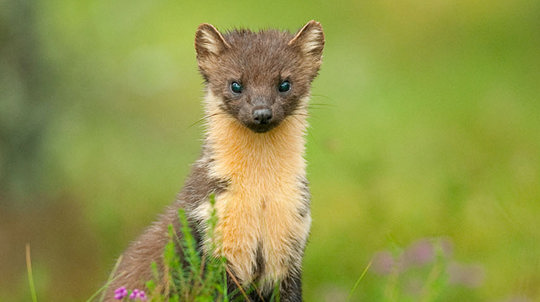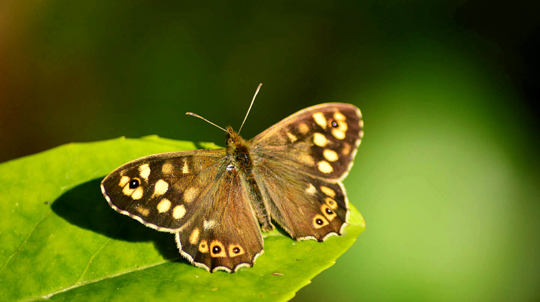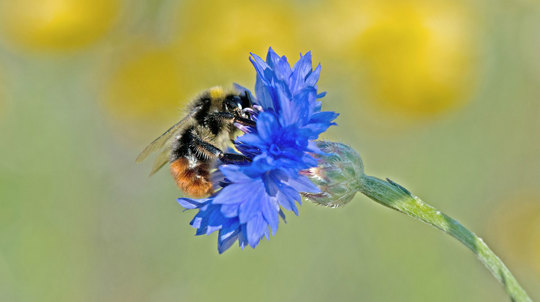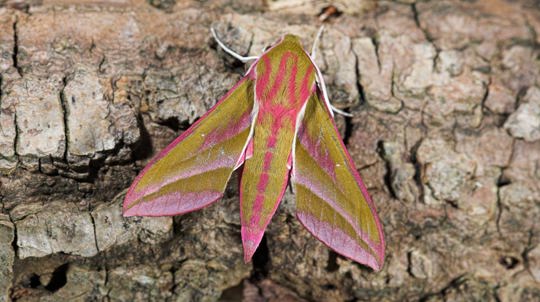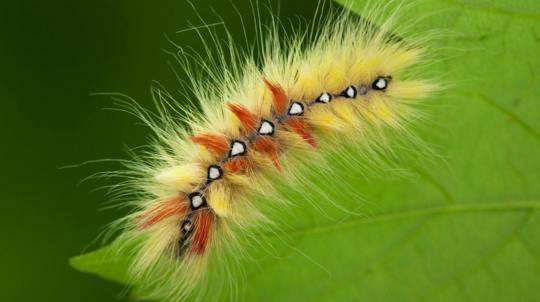With a top speed of 30mph, dragonflies are one of the fastest insects in the UK.
British dragonflies: larvae, wings and lifecycle

Content editor
Long before dinosaurs walked the earth, there were dragonflies in the sky. They were some of the first winged insects to evolve, around 300 million years ago. Back then oxygen levels were much higher, allowing giant dragonflies to evolve, with wingspans like eagles.
Dragonflies and damselflies are part of the Odonata order, meaning 'toothed ones'. They are fearsome predators of flying insects like gnats, mosquitos and other small bugs.
Don’t worry - they don’t bite us. They’re completely harmless, and actually helpful for humans, as they hunt the pesky insects that bother us.
There are 57 species of Odonata in the UK: 36 dragonflies (Anisoptera) and 21 damselflies (Zygoptera).
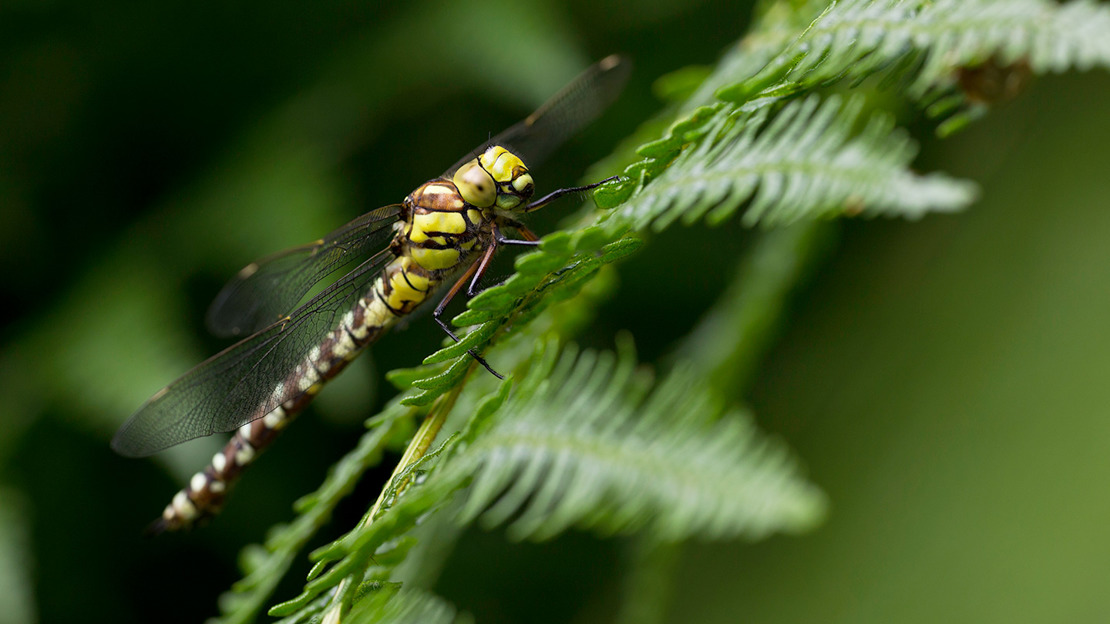
Dragonfly larvae
Dragonflies spend most of their lives as nymphs. Unlike typical larvae that moult only once, like butterflies, nymphs go through a more gradual change (metamorphosis) into adults.
The nymphs look like mini adults without wings. You’re unlikely to spot them as they live underwater.
All dragonfly nymphs have six legs and wing-sheaths. They also have a hinged jaw that can shoot out in an instant to catch prey. Nymphs aren’t brightly coloured like adult dragonflies. Many are green or brown, so they are camouflaged from predators.
They emerge from their eggs tiny and tadpole-like. They spend their larval period eating as much as they can, growing and moulting. They shed their skins 5-14 times before they are ready to leave the water.
Dragonfly wings
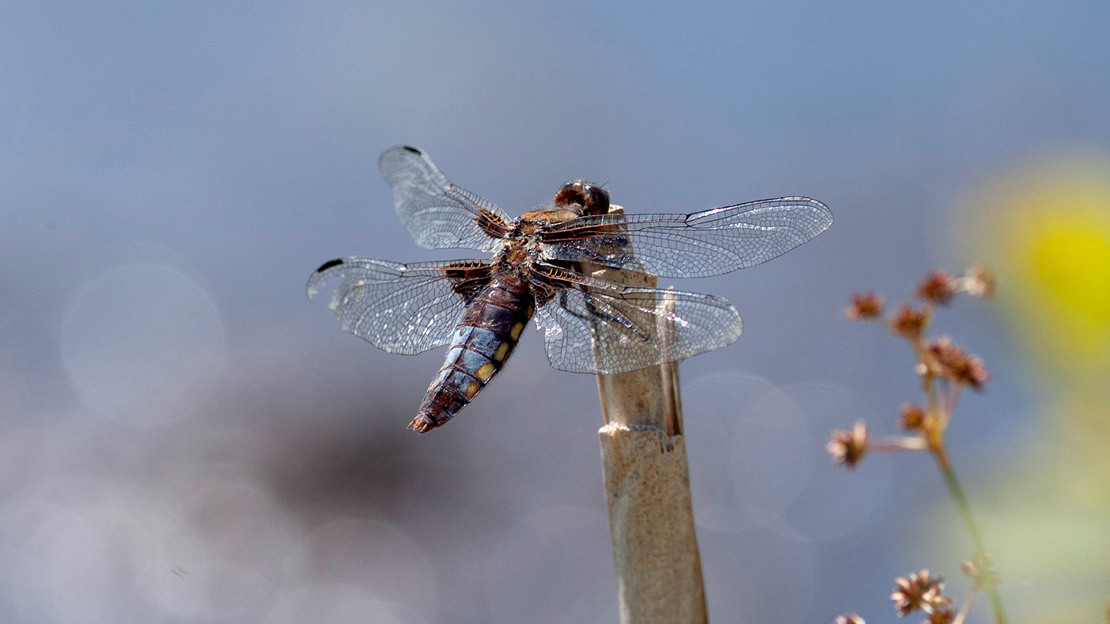
Few species can match the dragonfly’s spectacular flying ability. Their four long wings can beat together or separately. This allows them to hover in mid-air, fly in any direction and speed up quickly. Think of them as an ‘attack helicopter’ for small flying insects, moving in on their prey from any direction. Their large eyes give them fantastic vision, helping them hawk their prey.
Dragonflies and damselflies look similar but can be told apart by their size and shape. Dragonflies are large and robust, whereas damselflies are longer and thinner. Take a look at the wing position when they are at rest too – dragonflies hold their wings out from their body, but damselflies tend to fold theirs in alongside their body.
Dragonfly lifecycle
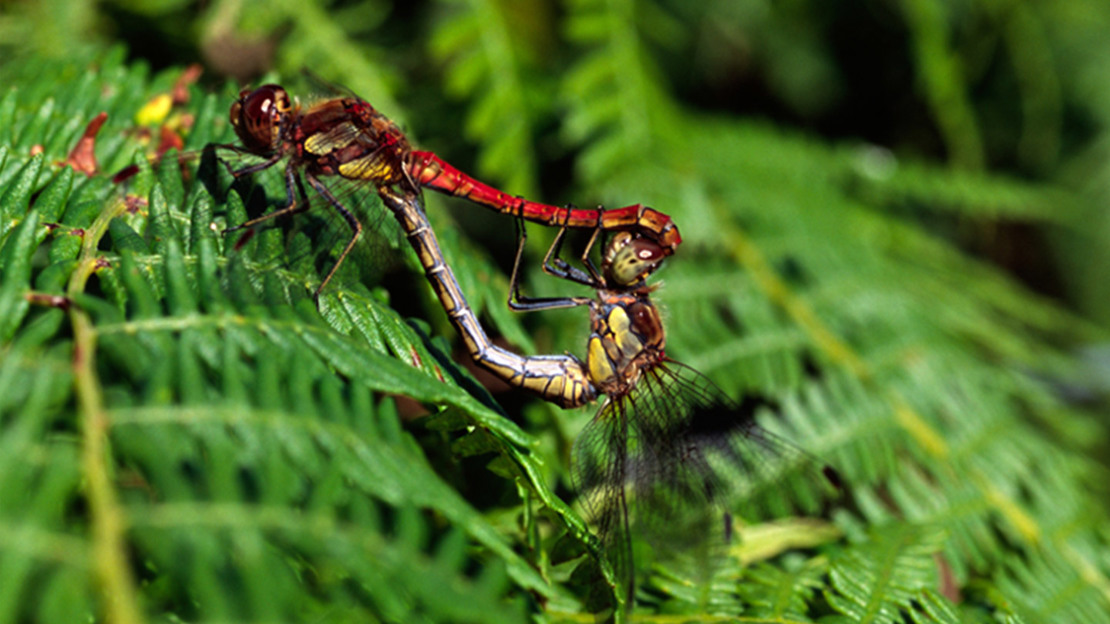
The dragonfly life cycle has three stages:
- egg
- nymph
- adult dragonfly.
You might see a dragonfly dipping half their body into water. This is a female dragonfly laying her eggs. Eggs take about to week to hatch into nymphs.
Once nymphs are fully grown, they crawl out of the water and shed one final time. They emerge as young dragonflies, then wait an hour or so until their wings harden and they can fly. Until their wings harden they are extremely vulnerable to predators.
They spend about a week feeding away from the water, becoming more colourful as they reach adulthood.
When mature, they move back to the water to breed. You can easily spot a mating pair by the heart-shaped ‘wheel formation’ of mating pairs. After breeding, the female heads to water to lay her eggs. Sometimes the male follows, protecting her until the eggs have been laid.
5 British dragonflies to spot near woodland
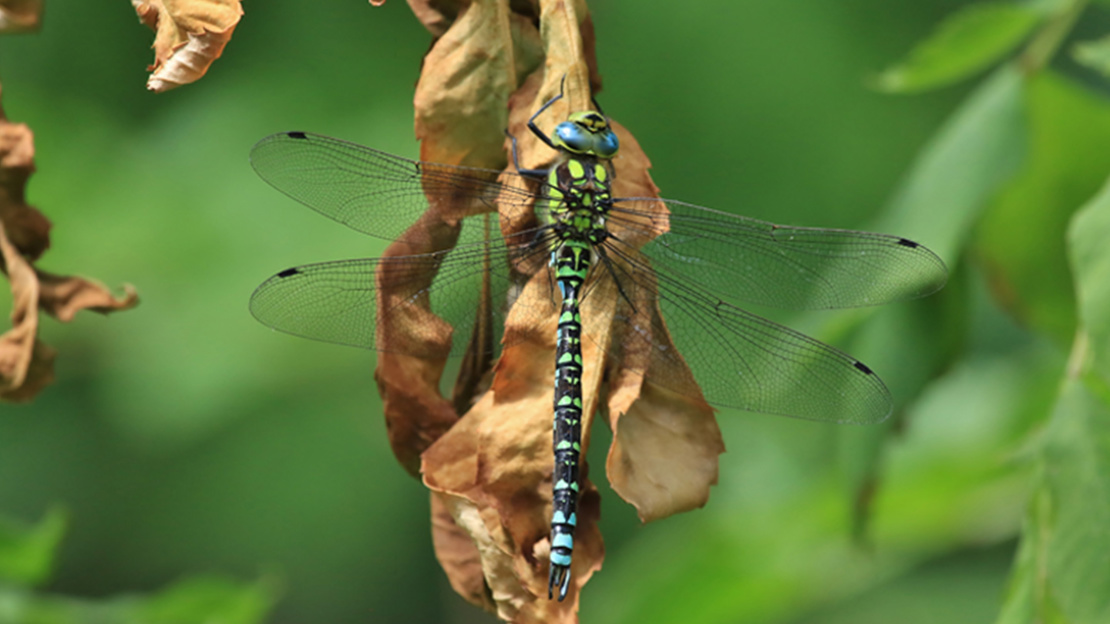
Southern hawker (Aeshna cyanea)
- Appearance: males are black with bright green markings and blue strips at the tip of the abdomen. Females are chocolate brown with green/yellow patterns.
- Where to see: woodland and garden ponds. Widespread and inquisitive, they often approach people.
- Size: 70-73mm
- Flying season: July – October
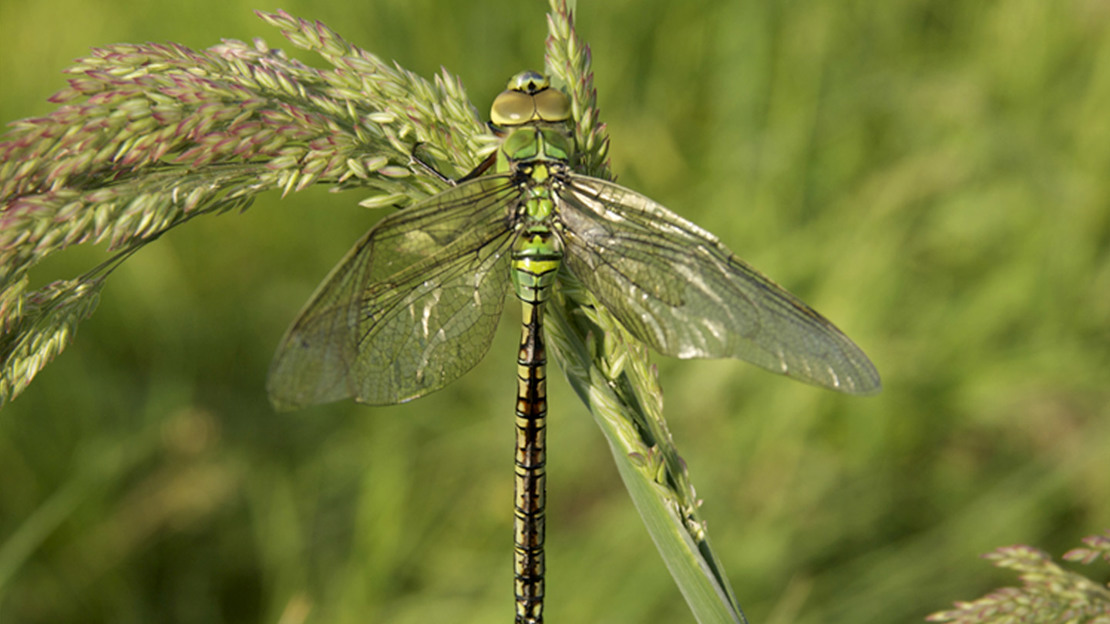
Emperor dragonflies have the largest wingspan of any British dragonfly at about 10.5cm.
Emperor dragonfly (Anax imperator)
- Appearance: males have a bright blue abdomen while females have green abdomens. Both have a black central line.
- Where to see: near lakes and ponds as well as along paths, hedgerows and meadows.
- Size: 76-78mm
- Flying season: late May – early September
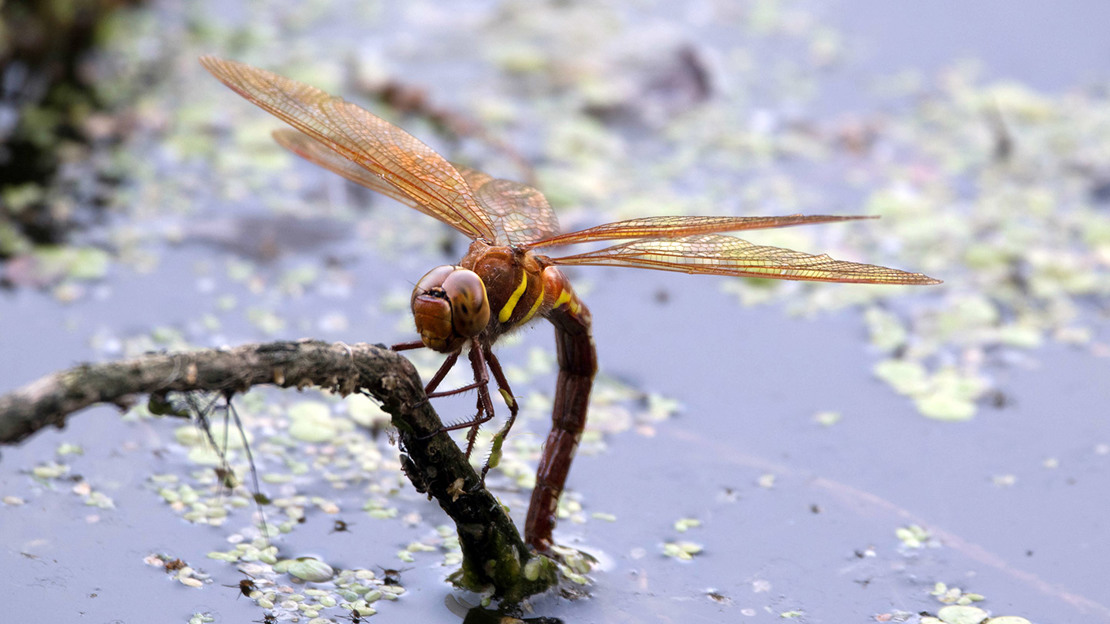
Brown hawker (Aeshna grandis)
- Appearance: One of the larger dragonflies in the UK, they’re brown with thick yellow strips on their sides. Males also have small blue markings.
- Where to see: hawking woodland rides for prey well into the evening.
- Size: 73-74mm
- Flying season: late June – early October
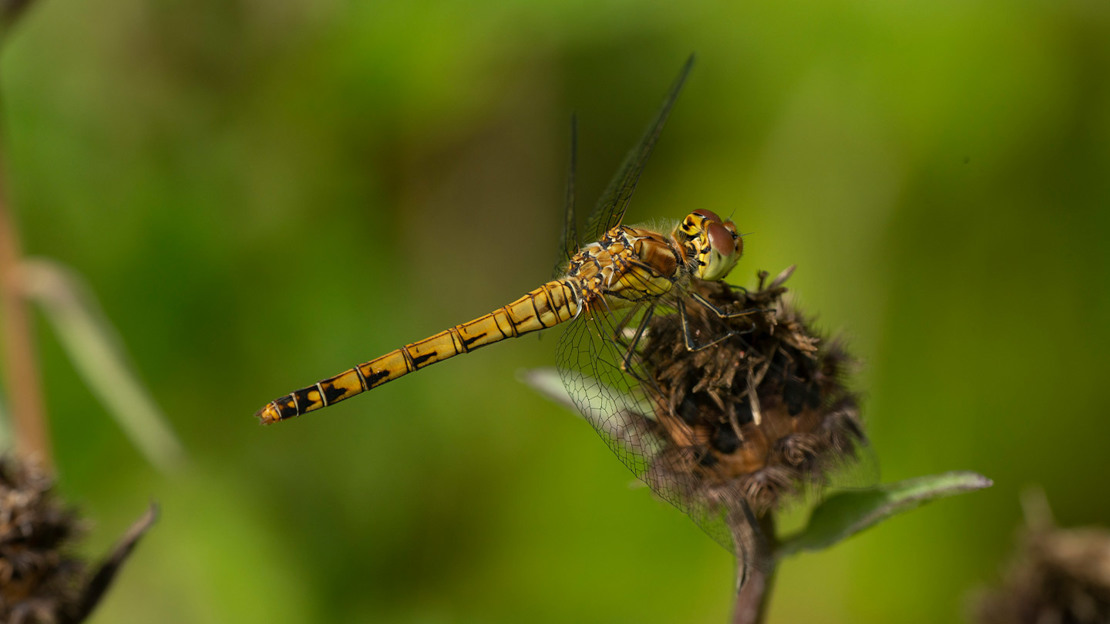
Common darter (Sympetrum striolatum)
- Appearance: males are orange-red. Females are yellow or light brown with black darts. Both have a distinctive yellow stripe on the legs.
- Where to see: most often found near bodies of water or resting on tops of plants in woodland rides.
- Size: 37-41mm
- Flying season: mid June – late October
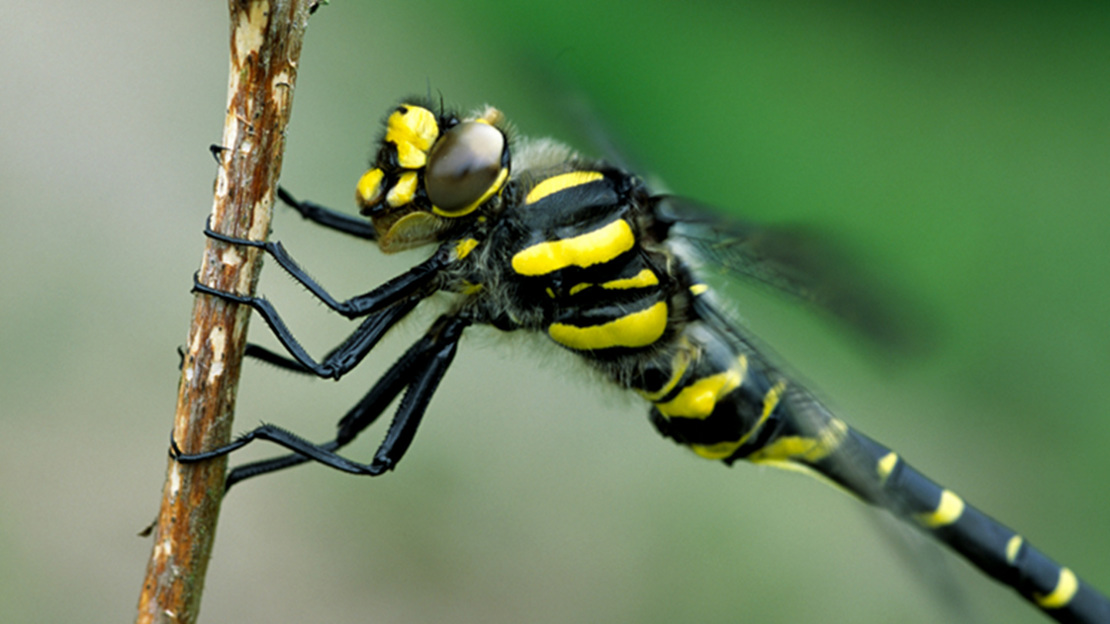
Reaching 8.6cm, the golden-ringed dragonfly has the longest body of the British dragonflies.
Golden-ringed (Cordulegaster boltonii)
- Appearance: black with yellow rings along the length of the abdomen. The female is the longer of the sexes.
- Where to see: they breed in acidic rivers and streams. Spot them roaming rivers, heathlands and woodland rides.
- Size: 74-86mm
- Flying season: May to September
What can you spot in your local woodland?
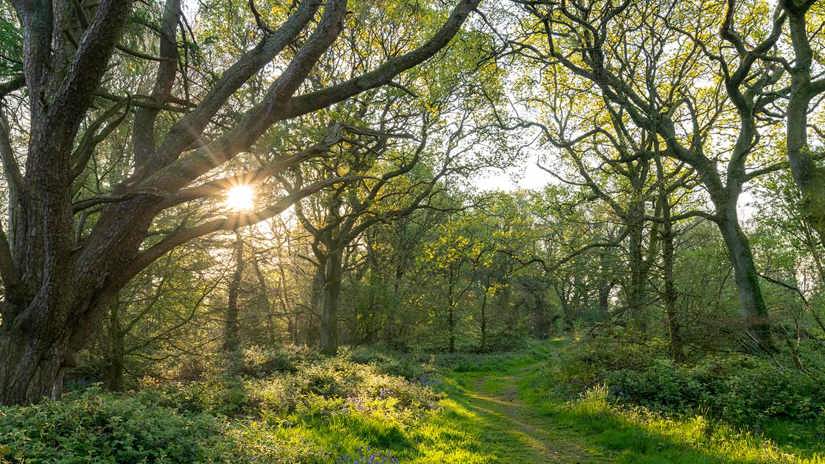
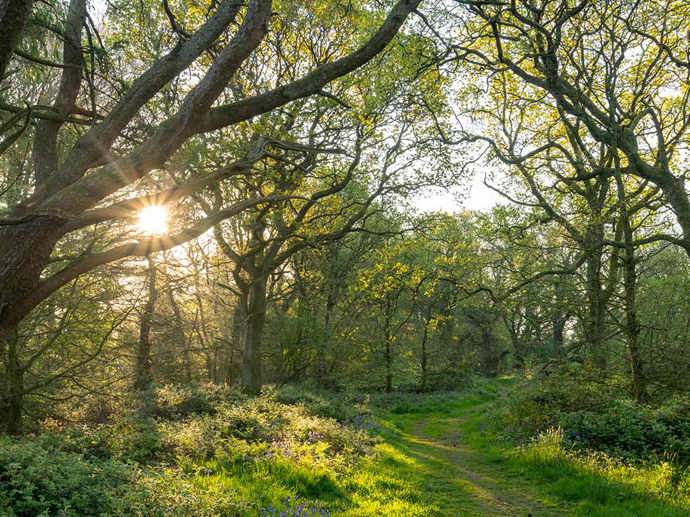
Go exploring
Primordial landscapes, tangled branches, breathtaking wildlife and miles of woodland trails. From the countryside to cities, we care for thousands of woods throughout the UK, all free to visit.


